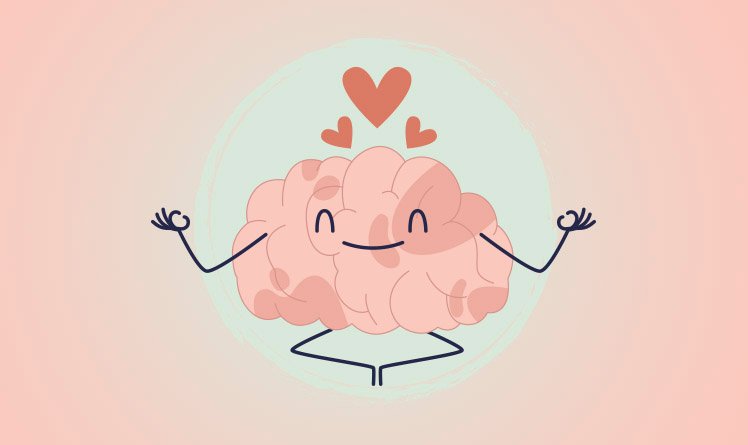PERMA model: what it is and how to apply it

|
Getting your Trinity Audio player ready...
|
Well-being and happiness are universal aspirations, but they can often seem elusive amid the hustle and bustle of everyday life. In this scenario, the PERMA Model stands out as a comprehensive approach to achieving and sustaining a fuller, more satisfying life.
If you have heard about the PERMA Model, this article is the right place to find answers. PERMA is an acronym that stands for five essential elements that, when cultivated, can lead to greater well-being and satisfaction. Let's understand!
What is the PERMA Model?
The PERMA Model is a structure created by psychologist Martin Seligman to explain the main components of human well-being. The acronym represents five pillars: Positive Emotion, Engagement, Relationships, Meaning and AccomplishmentTogether, they form a solid foundation for a full life, with more purpose, connection, and fulfillment.
The story of PERMA Model has its roots in positive psychology research, which seeks to understand and promote human well-being, in contrast to the traditional approach focused on mental illness.
"The PERMA Model is a compass for well-being. It shows that happiness isn't just about feeling pleasure, but about living meaningfully, growing, and connecting with others."
And why does this matter? Because well-being is not just the absence of suffering—it is the presence of wholeness. And this can be learned and cultivated.
The Origin of the PERMA Model and the Positive Psychology Revolution
Until the end of the 20th century, psychology had focused primarily on treating mental illness and psychological disorders, often neglecting the importance of studying and promoting positive mental health. Seligman was one of the pioneers who recognized this gap and dedicated himself to researching positive psychology, aiming to understand what makes people happy, fulfilled, and with a higher quality of life. In this way, Seligman proposed something revolutionary: what if, in addition to healing, psychology could also help us? help to flourish?
Thus, in the mid-1990s, Martin Seligman began working on the concept that would become the PERMA Model. He sought to identify the key factors that contribute to a successful and happy life.
Thus was born Positive Psychology—a science of good living—and the PERMA Model became its backbone. Instead of focusing solely on what's broken, the proposal was to investigate what works in people's lives and how it can be replicated.
In this sense, throughout their research, Seligman and his team identified five fundamental dimensions that play a crucial role in building lasting well-being: Positive Emotion (Positive Emotion), Engagement (Engagement), Relationships (Relationships), Meaning (Meaning) and Accomplishment (Achievement). These pillars work in synergy to create a lasting sense of well-being.
The 5 pillars of the PERMA Model
Let's now dive into each of the pillars. They work like gears: the more you nurture each one, the stronger the system as a whole becomes.
Positive Emotion
The dimension “Positive Emotion” refers to the experience of positive emotions in our daily lives. In this sense, it includes feelings such as joy, gratitude, serenity, hope, love, and fun. These emotions not only make us feel good but also have a positive impact on our physical and mental health. Whenever we cultivate positive emotions, we can make them act as an antidote to stress, anxiety and even depression.
One way to promote positive emotion is to practice gratitudeTaking a moment to acknowledge and be grateful for the good things in our lives, no matter how small, can increase our sense of well-being. Additionally, smiling, laughing, engaging in enjoyable activities, and cultivating optimistic thoughts are all effective ways to increase positive emotion in our daily lives.
“Positive Emotion is the cornerstone of the PERMA Model that encourages cultivating positive emotions to increase well-being and emotional resilience.”
Engagement
The dimension “Engagement” refers to the feeling of being deeply involved in activities that challenge us, stimulate our interests, and make us feel competent. Every time we are in a state of engagement, we enter a flow state, in which we lose track of time and feel immersed in the activity.
Finding engagement involves identifying our passions, interests, and talents, and regularly dedicating time to those activities. This could be a passion for work, hobbies, sports, art, music, or anything else that completely absorbs us. Engagement not only brings us joy, but it is also essential for building self-esteem and a sense of accomplishment.
“Engagement, in the PERMA Model, means being deeply involved in activities that provide focus and satisfaction, generating a state of flow.”
Relationships
The dimension “Relationships” highlights the importance of human connections in our lives. Having healthy, meaningful relationships is essential to our well-being. Positive social relationships provide us with emotional support, connection, understanding, and a sense of belonging.
But to cultivate this dimension, it is important to invest time and effort in our relationships. This involves staying in touch with friends and family, strengthening bonds of trust, and nurturing relationships that are genuine and meaningful. In addition, it is also important to create new connections and seek social support when needed.
“In the PERMA Model, Relationships highlights the value of human bonds as the foundation for emotional and psychological well-being.”
Meaning
The dimension “Meaning” refers to our sense of purpose and meaning in life. Having a larger purpose helps us face challenges and gives us a reason to wake up each morning. Finding meaning can involve contributing to something bigger than ourselves, whether through work, volunteering, helping others, or pursuing personal goals that align with our values.
Above all, seeking meaning requires self-reflection to understand what we truly value in our lives. This can evolve over time, and it is essential to be open to exploring new paths that bring a deeper sense of meaning and purpose.
“Meaning, within the PERMA Model, refers to the search for purpose and belonging to something greater than oneself.”
Accomplishment
The dimension “Accomplishment” is linked to setting challenging goals and the feeling of accomplishment when we achieve them. This dimension highlights the importance of personal growth, overcoming obstacles, and achieving significant milestones.
To promote this dimension, it is essential to set clear and measurable goals that are aligned with our values and interests. Breaking these goals down into smaller steps allows us to track our progress and celebrate each achievement, no matter how small. The feeling of accomplishment not only increases our self-confidence, but also motivates us to continue seeking new challenges and personal growth.
“Accomplishment in the PERMA Model is about setting and achieving goals, fostering self-esteem and a sense of competence.”
How to apply the PERMA Model in everyday life
Applying PERMA is simple—but it requires consistency. So, you don't need to change everything at once. Choose one pillar each week and implement small actions. Want an example?
- Monday: Write down 3 good things that happened (Positive Emotion)
- Tuesday: Dedicate 1 hour to something that absorbs you (Engagement)
- Wednesday: Call a friend (Relationships)
- Thursday: Reflect on your current purpose (Meaning)
- Friday: Celebrate personal progress (Accomplishment)
The transformation is in the details.
PERMA Model in Practice: Examples
Companies like Google and Zappos apply PERMA to create healthier and more productive environments. Schools also use the methodology to improve student performance and well-being. Therapists also incorporate the model into coaching sessions. NLP (Neuro-Linguistic Programming) and cognitive therapy.
In their personal lives, people who apply PERMA report fewer symptoms of depression, greater engagement at work, and more satisfaction in relationships.
PERMA, Mindfulness and NLP: How do these approaches connect?
The practice of Mindfulness helps to expand awareness of emotions and thoughts, favoring the pillar Positive Emotion. In contrast, NLP can be used to anchor flow states (Engagement) and reschedule beliefs related to achievement and purpose (Meaning and Accomplishment).
These approaches don't compete with PERMA. On the contrary, they strengthen it. Together, they form a powerful web of self-knowledge, balance, and evolution.
Benefits of the PERMA Model for Mental Health and Performance
Studies show that people who develop the five pillars of PERMA have:
- Lower rates of anxiety and depression
- Greater productivity and creativity
- Better interpersonal relationships
- Greater longevity and physical health
- High levels of self-actualization
Therefore, applying PERMA is not a luxury. It's strategic self-care.
Challenges in applying PERMA and how to overcome them
What's the biggest challenge in implementing PERMA? Lack of time and focus. After all, we live on autopilot.
So, how do you solve it? Schedule your well-being. Literally. Block out 15 minutes a day to cultivate at least one of the pillars. Make it a non-negotiable habit. Use reminders, an alarm, or even a planner.
Remember: well-being is a practice, not an event.
Conclusion: Paths to Flourish
The PERMA Model is an invitation to step out of autopilot and live with more intention. It's science, yes, but it's also art—the art of living well. When we integrate these five pillars into our routine, we take a quantum leap toward becoming our best self.
Incorporate the five elements of PERMA Model — Positive Emotion, Engagement, Relationships, Meaning and Accomplishment — in your daily life, allows you to create an environment conducive to personal growth, well-being, and lasting happiness. So, cultivate positive emotions, engage in meaningful activities, strengthen your relationships, seek meaning, and set goals that lead you to fulfillment.
That holistic approach provides a powerful framework for living a fuller, more satisfying life. Therefore, PERMA is a path to a life richer in meaning, deeper relationships, and a genuine sense of fulfillment. Start applying the PERMA Model and discover the transformation it can bring to your journey.
"You don't have to wait for ideal conditions to begin blooming. Start with what you have, where you are, and the rest will reveal itself along the way."
Key Questions about the PERMA Model
1. What does the acronym PERMA mean?
PERMA stands for Positive Emotion, Engagement, Relationships, Meaning and Accomplishment — the five pillars of well-being according to Martin Seligman.
2. How does the PERMA Model help with mental health?
By cultivating positive emotions, purpose, and healthy relationships, PERMA reduces anxiety, depression, and promotes greater emotional resilience.
3. Is it possible to apply PERMA in work environments?
Yes! Companies that apply PERMA have more motivated, creative, and satisfied teams. The key is to promote engagement, recognition, and purpose.
4. What is the relationship between PERMA and Mindfulness?
Mindfulness helps develop emotional awareness and focus, strengthening the PERMA pillars of Positive Emotion and Engagement.
5. Does the PERMA Model replace therapy?
No. It is complementary. It can be used by coaches, therapists or individually, but does not replace clinical monitoring when necessary.
Recommended reading:
Flourish – Martin EP Seligman (Author), Cristina Paixão Lopes (Translator)
Image: Freepik modified
Article originally published on 08/13/2023 and revised on the date above.

Marcel Castilho is an expert in neuromarketing, neuroscience, mindfulness and positive psychology. In addition to being an advertiser, he also has a Master's degree in NLP – Neurolinguistic Programming. As the owner and founder of the communications agency VeroCom and also of the digital agency Vero Contents, he has been studying human behavior for over 30 years.



